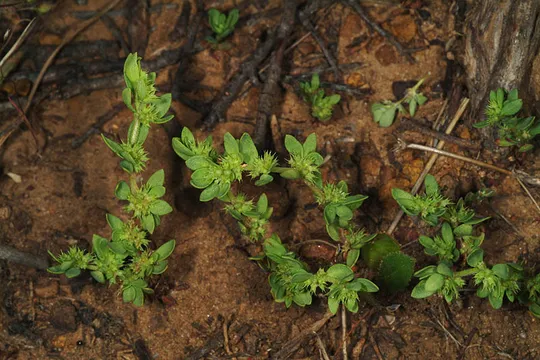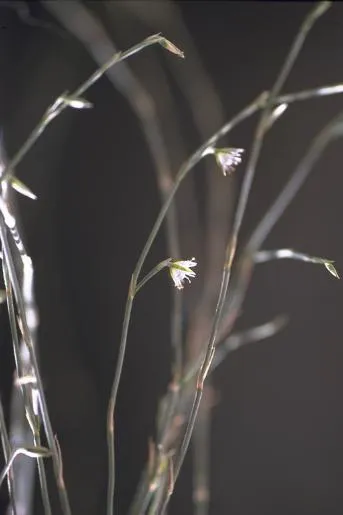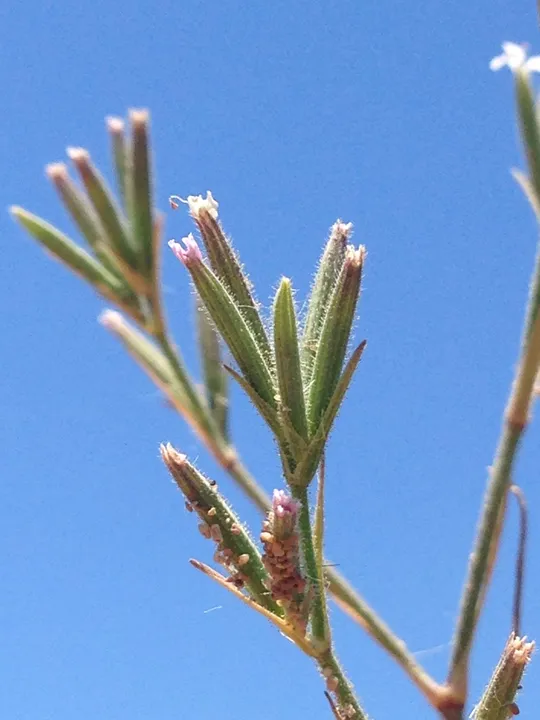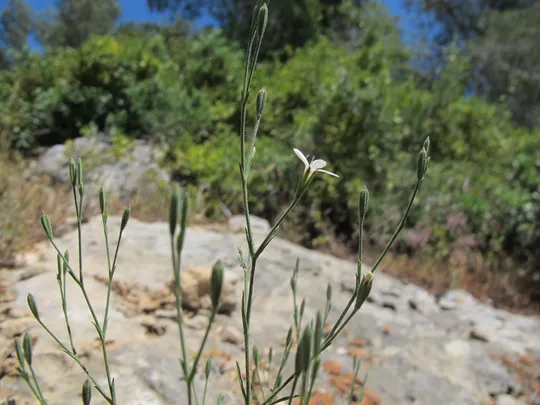Paronychia palaestina
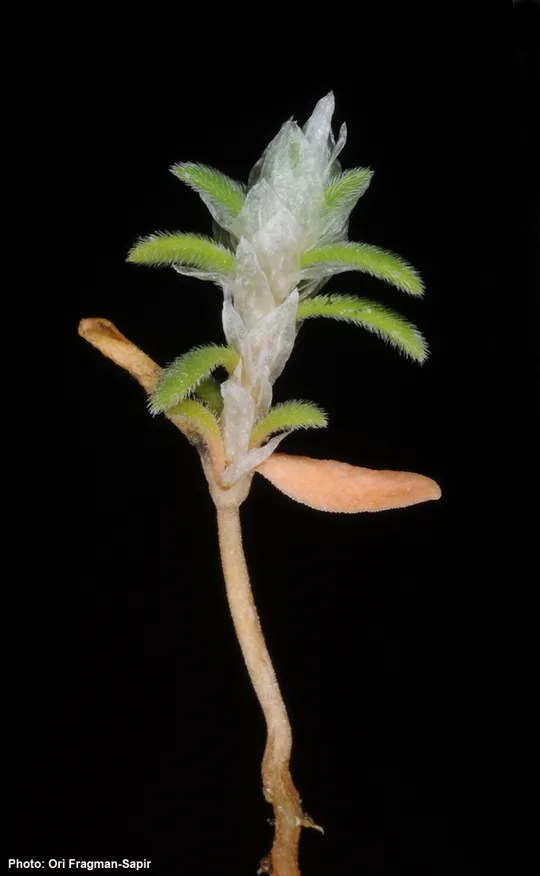
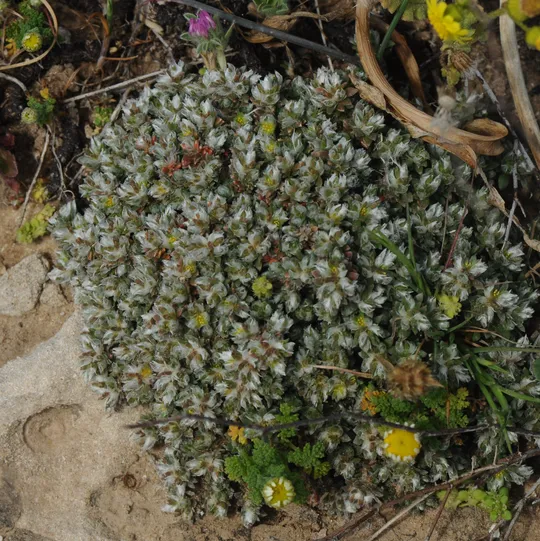
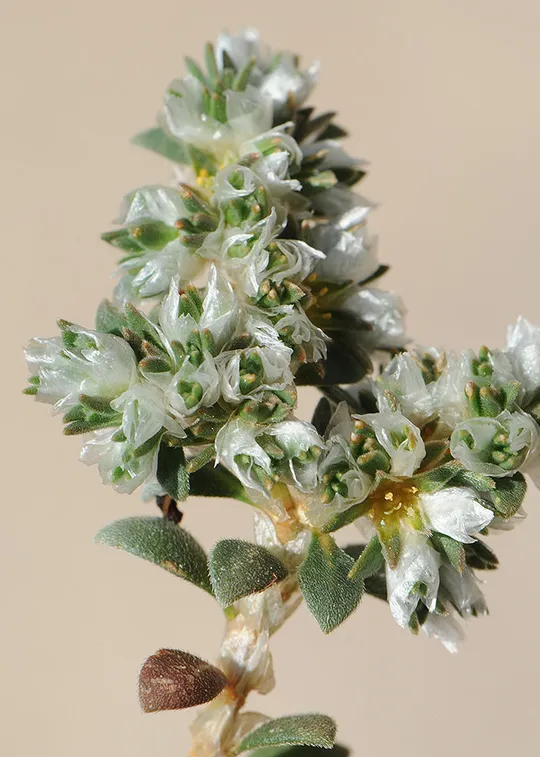
Paronychia palaestina is a perennial, prostrate plant that creates a flat cushion, 7-16 cm across. Leaves are succulent, oval or lanced. The large white stipules are papery and give the plant a whitish look similar to straw. The flowers are tiny and almost invisible, with papery greenish petals, lacking bristles at their edges and hairy on their posterior side. P. palaestina blooms in April-May, and specimens growing in protected, damp habitats continue to bloom until the end of the summer.
The plant was collected
until the 1950s from a few locations along the coast of the Mediterranean Sea –
HaZiv Bridge, Shave Tsion and Acre in Acre Valley; Herzliya, Netanya and
Tel-Barukh in the Sharon; and the Atlit and Dor-Habonim beach on the Carmel
Coast. In Flora Palaestina, it is also recorded from the Pleshet coast, but
there is no herbarium data from this region. There are barely any reports of
its presence in the Sharon and Philistean Plain regions since 1956, and it
seems that most of the locations are extinct. Since the 1980s, it has been
found with certainty only in a few locations in the Carmel Coast and Acre
Valley regions. The plant grows today are on the HaHotrim, Megadim and Atlit
beaches, En Ayala and the Dor-Habonim
beach on the Carmel Coast. In Acre Valley, populations grow on the beaches of
Rosh HaNikra, Akhziv, Shave Tsion and Bustan HaGalil.
Grows on calcareous
sandstone rocks near the beach that are significantly affected by the ocean
spray.
Paronychia palaestina is similar in structure to Paronychia
argentea, which is common in most regions of Israel. The two species are alike
in their silvery bracts, the shape of the leaves and the creeping-cushion
characteristic of the plant. Their flowers, however, are distinctly different: Paronychia
argentea has truncated calyx lobes and at their head, there is a point resembling
a stiff bristle, while the calyx lobes of Paronychia palaestina become
gradually narrower, their surface covered with soft hairs and they do not have
a stiff bristle at their head.
Paronychia palaestina
is closest to Paronychia
sinaica, which grows in rock pockets in the desert and Mediterranean-desert
ecotone. There are researchers who include it in the Paronychia kurdica
taxon, which grows in the eastern Mediterranean Sea basin.
Chaudhri (1968) split Paronychia
sinaica (with the flowers lacking a bristle at the head of the calyx nodes)
into a few species, and defined three additional species in Israel: 1) Paronychia
capitata, a very close species to Paronychia sinaica and according
to Danin (2004), very common in Israel in the transition area. 2) Paronychia
jordanica – a localized species in Israel, described from Nazareth. It is
very systematically close to Paronychia capitata. It was not included in
the list of red plants because in our opinion, it is a questionable species
which none of the botanists in Israel was able find in the Nazareth hills from where
the type was originally described. 3) Paronychia macrosepala – This
species is very close to Paronychia palaestina, which Danin (2004)
describes as “very rare” from fallow fields on the western Galilee coast. This
is the most common species in Cyprus (Meikle, 1977) and apparently replaces Paronychia
palaestina there, and is very close to it. It is possible that this is a
synonym for Paronychia palaestina. In the rare species survey conducted in
northern Israel and the coastal plain in the 1990s, we were unable to locate
the three Paronychia species described above.
·
Accelerated
development in the coastal calcareous sandstone ridge areas and the human and
all-terrain traffic in these areas has greatly reduced the number of suitable locations.
The spread of the invasive South African species, Carpobrotus acinaciformis,
on the coastal calcareous sandstone ridges is gradually reducing its natural
habitat.
·
The
locations where the plant was found in the 1980s are fragmented and some 50-60
km apart. Where the species is present, it usually grows very densely.
·
In
the Acre Valley and Carmel Coast locations, population sizes are estimated at between
a few dozen to a few thousands of specimens at each location.
·
The
plant is globally endangered, because it is endemic to a narrow strip of the Israeli
and Lebanese coastline.
·
Protected
at the Dor-HaBonim beach.
To attempt to locate additional populations on the calcareous sandstone
ridges and introduce them in the Apollonia National
Park and Hof HaSharon National Park.
The species is endemic
to the Israeli and Lebanese coastline.
Paronychia palaestina is endemic,
but very similar to other species around the Mediterranean Sea. In Israel, it was
previously found in dozens of locations along the coast on the calcareous sandstone ridges, but their numbers have diminished greatly,
and there is uncertainty regarding their situation today. It is unique to a
habitat, which is gradually disappearing as development near the coast accelerates,
and due to the spread of the Carpobrotus acinaciformis, which
competes with the native species.
Chaudhri, M.N. 1968. A revision of the Paronychiinae. Meded. Bot. Mus. Herb. Rijks Univ. Utrecht 285: 1-440.
Current Occupancy Map
| 1000 squre meter pixel | 5000 squre meter pixel | 10000 squre meter pixel | |
|---|---|---|---|
| number of observations | 0 | 0 | 0 |
| in total pixels | 0 | 0 | 0 |
| Family | Caryophyllaceae |
| Classification | On the endangered species list |
| Ecosystem | Coastal area |
| Chorotype | Endemic (Mediterranean) |
| Conservation Site | Dor – HaBonim Beach nature Reserve |
| Rarity |
1
2
6
|
|---|---|
| Vulnerability |
0
3
4
|
| Attractiveness |
0
0
4
|
| Endemism |
0
3
4
|
| Red number |
1
4.2
10
|
| Peripherality | 0 |
| IUCN category | DD EW EX LC CR EN VU NT |
| Threat Definition according to the red book | Endangered |
 Based on:
Based on:
